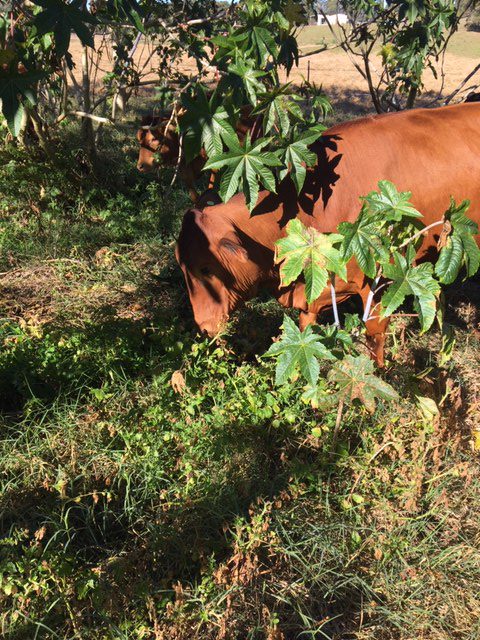There’s no doubt the Covid-19 issues around food security have all us looking more at what we can produce at home. If we are lucky enough to have a farm or some acreage, perhaps it has even led to a few different vegetables being tried in the garden or some Chickens or other species of meat or milk producing animals being considered for the land.
All you need is some grass and water and in this season we all have those things right? WRONG.
Although diversity of species is one of the cornerstones of regenerative agriculture, a recent graph on the Diet Composition of Herbivores is a great reminder that diversity is also necessary in what those species have available to eat! This article was based on wild-roaming livestock and wildlife. This is what they would eat, if they had choice. Goats for example are not “grazers” as a rule. If given the choice they are Browsers with “grass” only making up 10% of their diet. Browse is well over half their diet (trees & shrubs) with Forbes (weeds) completing the mix. GOATS AREN’T GRASS EATERS! But cattle and sheep are aren’t they? WRONG again! Well partly, although around 50% of the diet may be grass, this study found once again that Forbes and Browse (or weeds & trees/bushes) was the other 50%.
So, some things to talk about. Like us, if there is no choice we will eventually eat what is put in front of us. Unfortunately getting fed chocolate for every meal leaves us lacking in many essential nutrients and we’d end up with the scours and eventually die (if we had a rumen this process would be faster as the lack of “roughage” to stimulate the rumen may beat the lack of nutrient problem to ending us). Desert rangelands are much different to lush green grass, surely goats would eat more grass if it was nicer- NO- revert to chocolate example! Anyone who has done an RCS course would have been treated to the NIRS data showing percentage of non-grass consumption in cattle. The figure that stuck with me in Brigalow country was over 30% browse. Anyone familiar with Peter Andrews and Hugh Lovell theories (and many others) would know of the importance of weeds not only in landscapes but also in animal health. Remove the weeds, where do micronutrients come from?
Finally, there is an X-Factor in the whole diversity of animal argument. Beneficial microbe transfer between ruminants like goats (and camels) that have guts better suited to highly lignified tissue (browse) and those with systems customised to efficient use of grass (sheep & cattle for example). This cross-over can occur through the transfer of microbes in saliva (and facies) at shared water points and access licks. The result can be spectacular with both species eventually having a more functional digestive system and doing better than either one alone. More diversity by adding monogastrics can further enhance a system both from a microbial point of view but also an animal impact and parasite cycle disruption stance.
Biodiversity is key in any system as is mimicking nature in the way they are grazed. If you don’t have a large rangeland to hand on which to run your herd across, mimic the system with what you have; controlling the grazing intensity and time of your herd using fencing and stocking density then allow recovery periods that facilitate parasite cycles to be broken and effective regrowth to occur before animals are bought back again for their next rotation. If your mixed herd all have access everywhere all the time, you aren’t mimicking nature, you are mimicking England; but in our brittle environment that will instead result in degradation and eventually desertification.
By Tim Scott
Source: https://www.bushagri.com.au/2020/03/considering-goats/
